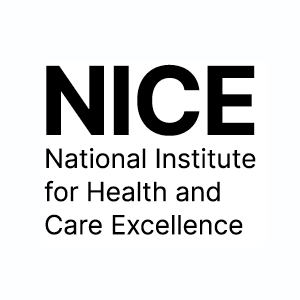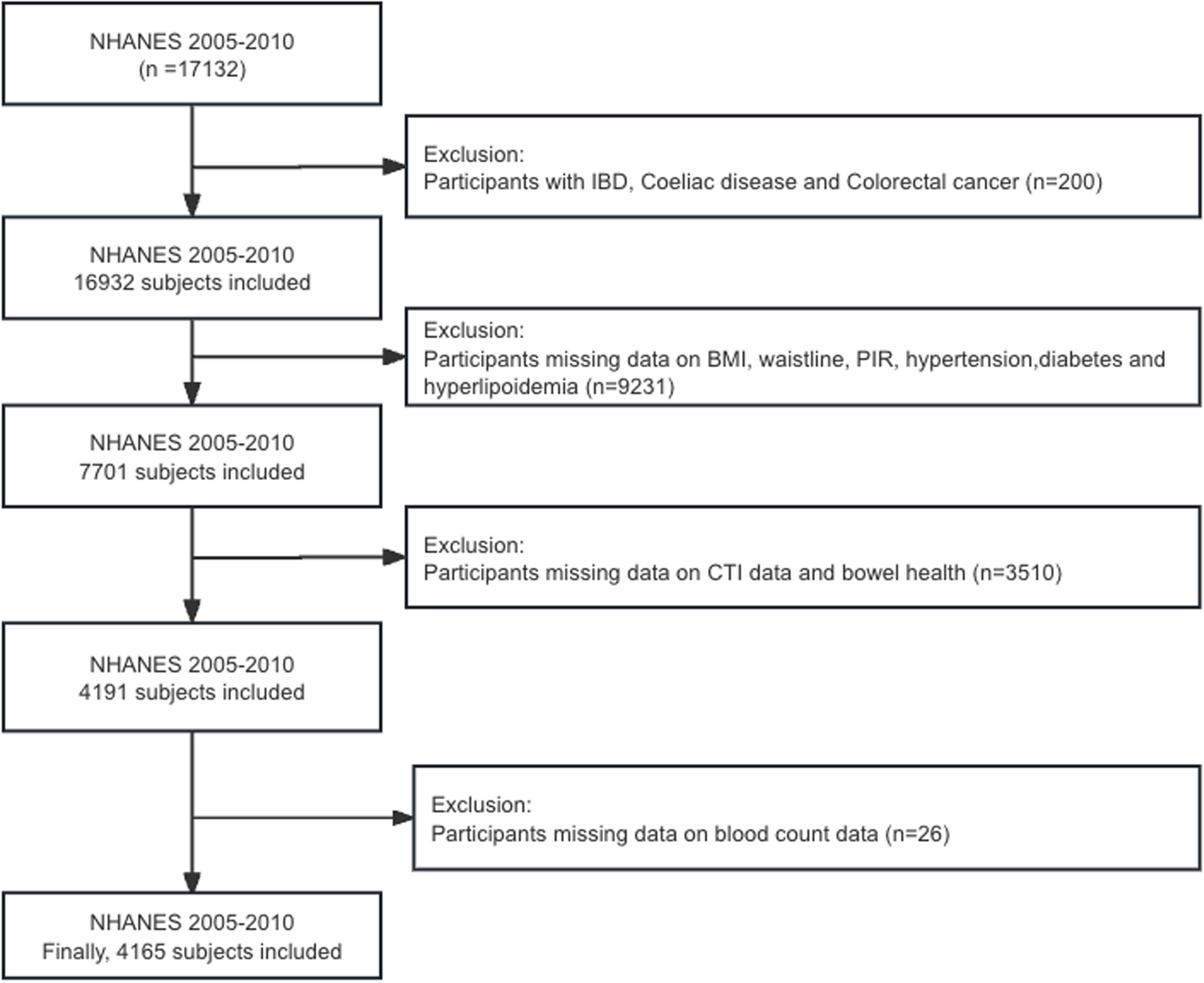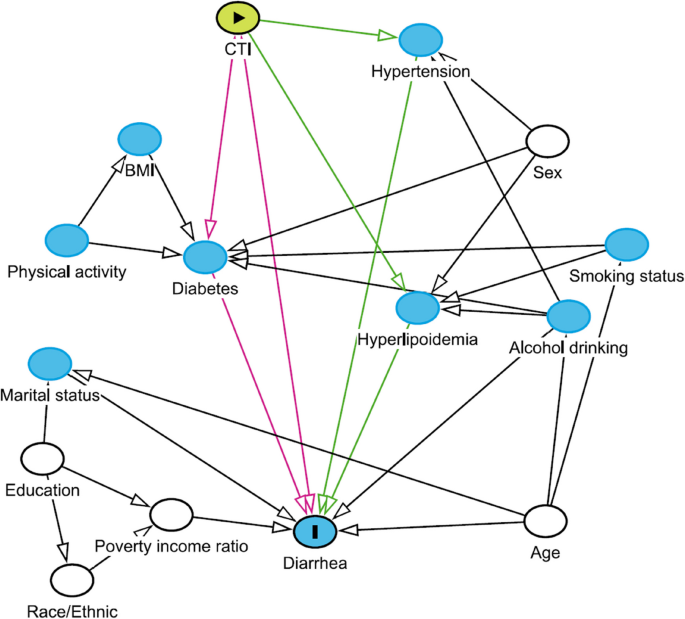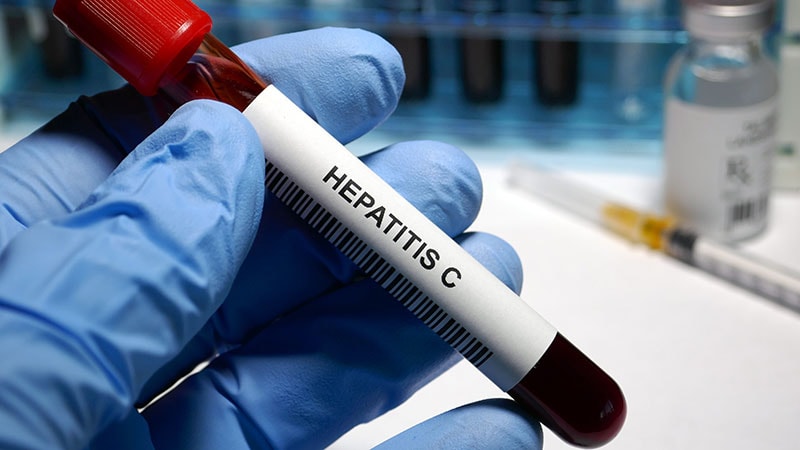Introduction
Gout is an autoinflammatory metabolic disease characterized by hyperuricemia and monosodium urate crystal deposition. It is the most common inflammatory arthritis, with a significant increase in prevalence in several countries, such as the United States.1 Epidemiological data show that the global prevalence of gout ranges from 1% to 6.8% in different regions, imposing a substantial burden on patient quality of life and healthcare systems.2 Despite deeper understanding of the pathogenesis, diagnosis, and treatment strategies for gout, the identification and management of refractory gout remain major challenges, with refractory gout often characterized by frequent flares, persistent hyperuricemia despite standard therapy, and significant tophi burden.3
Refractory gout is increasingly recognized in clinical practice. These patients often present with frequent polyarticular flare-ups, large tophi formation, joint damage, and musculoskeletal dysfunction, which significantly reduce their quality of life.4 Despite receiving standard treatment, these patients still face considerable difficulties in controlling the disease, whether in achieving target uric acid levels or alleviating clinical symptoms. The management of refractory gout not only requires attention to the disease itself but also to its common comorbidities, especially metabolic syndrome.5 Metabolic syndrome, a cluster of cardiovascular risk factors, including abdominal obesity, hypertension, dyslipidemia, and glucose metabolism disorders, has become a major cause of morbidity and mortality in both developed and developing countries.6 In China, the prevalence of metabolic syndrome has been increasing rapidly (24.9% in urban areas, 19.2% in rural areas, reaching 39.0% in some rural regions),7 significantly correlating with gout epidemic trends: over the past 30 years, the age-standardized prevalence of gout has increased by an average of 0.9% annually, with adult prevalence rising to 1.23% in 2019.8 Notably, individuals with metabolic syndrome have a two-fold higher risk of developing gout compared to the general population.Epidemiological studies have shown a close link between gout and metabolic syndrome, with the prevalence of metabolic syndrome being significantly higher in gout patients compared to the general population.9 The prevalence of metabolic syndrome among gout patients in different regions ranges from 30.1% to 34%.10,11 Notably, Schlesinger et al12 reported that gout patients with more severe metabolic syndrome have a significantly increased risk of death.Hyperuricemia is considered a key factor linking gout and metabolic syndrome. Uric acid plays a dual role—functioning as an antioxidant while also promoting inflammation and metabolic disturbances.13 At the vascular level, uric acid affects blood vessel function and structure, contributing to hypertension and cardiovascular risk.14,15 There also exists a bidirectional relationship between uric acid and insulin function. Insulin resistance can decrease uric acid excretion,16 while elevated uric acid levels may worsen insulin sensitivity, creating a self-reinforcing cycle that impacts both conditions.17
However, there is limited research on the relationship between refractory gout and metabolic syndrome, particularly in Asian populations. Although studies have explored the association between gout and metabolic syndrome, a comprehensive analysis of the metabolic disorder characteristics in refractory gout patients has not been fully conducted, particularly regarding the nonlinear relationship between metabolic parameters and clinical features in refractory gout patients. The lack of evidence in this area limits clinicians’ ability to perform risk stratification and make individualized treatment decisions for patients with refractory gout.
Therefore, this study aims to explore the association between refractory gout and metabolic syndrome, using propensity score matching to control for confounding factors, and to analyze the nonlinear relationships between metabolic abnormalities and clinical parameters in refractory gout patients. As an important effort to systematically investigate this association in the Chinese population, we hypothesize that the prevalence of metabolic syndrome in refractory gout patients is significantly higher than in non-refractory gout patients, and that the metabolic burden has complex nonlinear relationships with clinical parameters. Clarifying these associations will help identify high-risk subgroups with increased metabolic syndrome risk, provide evidence-based recommendations for the comprehensive management of refractory gout patients, and ultimately improve patient prognosis and quality of life.
Methods
Study Design and Population
This study was a single-center retrospective cohort study that included gout patients who visited the Department of Rheumatology and Immunology at the First Affiliated Hospital of Tianjin University of Traditional Chinese Medicine from January 1, 2014, to December 31, 2024. All patients were diagnosed according to the 2015 American College of Rheumatology/European League Against Rheumatism (ACR/EULAR) gout classification criteria.18 The inclusion criteria were: (1) age ≥18 and ≤80 years; (2) meeting the ACR/EULAR gout classification criteria; (3) complete clinical data and follow-up records. The exclusion criteria included: (1) secondary gout (eg, gout caused by conditions such as renal failure, hematopoietic disorders like myeloproliferative neoplasms, or the use of specific medications like diuretics); (2) concomitant autoimmune diseases; (3) severe liver or renal dysfunction; (4) malignancy; (5) incomplete data or lost to follow-up. All participants were of Asian ethnicity. This study was approved by the Ethics Committee of the First Affiliated Hospital of Tianjin University of Traditional Chinese Medicine (approval number: TYLL2025[Zi]007). This study was conducted in accordance with the principles of the Declaration of Helsinki. All patient data were anonymized to protect patient privacy and data confidentiality. As this was a retrospective analysis, the ethics committee waived the requirement for informed consent from patients. As a retrospective study, all patients who met the inclusion and exclusion criteria within the specified timeframe were included, and no formal sample size calculation was performed beforehand. All data for this study were sourced from the hospital’s Electronic Medical Record system, which served as the primary data collection instrument. To ensure the accuracy and reliability (validity) of the data, a standardized data abstraction form was utilized. The data were independently extracted by two trained researchers. Any discrepancies identified during this process were resolved by discussion and consensus with a senior researcher. The collected data primarily represent the baseline characteristics at the time of the patient’s comprehensive assessment at our center. For variables dependent on a time span, such as the frequency of gout flares, the calculation was based on the 12-month period preceding the assessment, as documented in the EMR. If essential baseline information was missing from the initial record, subsequent clinical encounter notes within the EMR were reviewed to the supplement data. Comprehensive baseline clinical data were collected, including demographic characteristics (age, sex), clinical features (gout duration, flare frequency, tophi), laboratory tests (uric acid, blood glucose, lipids, inflammatory markers, liver and kidney function), and comorbidities.
Definition of Refractory Gout
According to the International Refractory Gout Working Group’s definition,19 refractory gout must meet at least two of the following criteria: (1) despite receiving standard urate-lowering treatment (such as allopurinol or febuxostat at maximum tolerated doses), serum uric acid remains ≥6.0 mg/dL (357 μmol/L) or cannot reach target levels; (2) ≥2 gout attacks per year; (3) at least one clinically confirmed tophus; (4) chronic gouty arthritis, manifested as persistent joint swelling or functional limitation; (5) symptoms (such as pain or joint function) remain poorly controlled despite standard treatment (including urate-lowering and anti-inflammatory therapy). This definition follows the 2020 American College of Rheumatology (ACR) gout guidelines to ensure specificity and improve clinical operability.
Definition of Metabolic Syndrome
Metabolic syndrome was defined according to the National Cholesterol Education Program (NCEP) Adult Treatment Panel III (ATP III) criteria,20 requiring at least three of the following five criteria: (1) increased waist circumference (Asian standards: males ≥90 cm, females ≥80 cm, based on the International Diabetes Federation [IDF] standards); (2) triglycerides ≥1.7 mmol/L or on lipid-lowering treatment (such as statins); (3) low HDL cholesterol (males <1.03 mmol/L, females <1.30 mmol/L) or receiving related treatment; (4) blood pressure ≥130/85 mmHg or on antihypertensive medication; (5) fasting blood glucose ≥5.6 mmol/L, on antidiabetic treatment (such as oral hypoglycemic agents or insulin), or diagnosed with type 2 diabetes.
Propensity Score Matching
To control for confounding bias, propensity score matching (PSM) was used in this study. A logistic regression model was applied to calculate the propensity score for each patient, with matching factors including baseline characteristics that might influence the relationship between refractory gout and metabolic syndrome, such as sex, age, uric acid level, diabetes, hypertension, and hyperlipidemia. Variables were selected based on previous literature and clinical relevance. A 1:1 nearest-neighbor matching method was used, matching each refractory gout patient to a non-refractory gout patient with the closest propensity score, allowing a maximum propensity score difference of 0.02 (caliper). The matching effect was assessed using standardized mean differences (SMD), with SMD <0.1 considered a good match. After matching, the data were further analyzed using logistic regression to evaluate the association between refractory gout and metabolic syndrome.
Nonlinear Relationship Analysis
To assess potential nonlinear relationships between clinical parameters and metabolic syndrome or refractory gout, restricted cubic spline models were used. The relationships between age and ESR with metabolic syndrome, as well as ESR, CRP, SBP, DBP, blood glucose, and TG with refractory gout, were modeled separately. The model included four knots located at the 5th, 35th, 65th, and 95th percentiles of the variable distribution. All nonlinear models were adjusted for potential confounding factors, including age, sex, and baseline metabolic risk factors. Results were expressed as adjusted odds ratios (ORs) with 95% confidence intervals (CIs), with a focus on identifying reference points for each clinical parameter and plotting nonlinear relationship curves to show how the OR changes with the parameters.
Statistical Analysis
Statistical analysis was performed using SPSS 25.0 software and R 4.1.0. Normally distributed continuous variables were expressed as mean ± standard deviation, non-normally distributed continuous variables as median (interquartile range), and categorical variables as frequency (percentage). t-tests or Mann–Whitney U-tests were used to compare continuous variable differences between groups, and chi-square tests or Fisher’s exact test were used to compare categorical variable differences. Multivariable logistic regression analysis was used to explore the independent association between refractory gout and metabolic syndrome, with all potential confounders included in the model. Collinearity was assessed using the variance inflation factor (VIF), with VIF >5 indicating collinearity. Subgroup analyses were performed to compare the differences in the association between metabolic syndrome and refractory gout based on flare frequency (<3 times/year vs ≥3 times/year), tophus presence, age (<60 vs ≥60), sex, uric acid level (<480 μmol/L vs ≥480 μmol/L), and disease duration (<3 years vs ≥3 years), with interaction tests used to evaluate statistical significance. All tests were two-sided, and P < 0.05 was considered statistically significant.
Results
Propensity Score Distribution Before and After Matching
Before propensity score matching, there was significant overlap between the refractory gout group and the non-refractory gout group in the 0.25–0.6 range. After matching, the distributions of the two groups nearly completely overlapped, indicating that matching effectively reduced baseline differences. A 1:1 nearest-neighbor matching with a caliper of 0.2 resulted in 1,353 matched pairs. After matching, the two groups achieved good balance in terms of gender (SMD = 0.011) and diabetes (SMD = 0.011), while slight imbalance remained in age (SMD = 0.045), uric acid levels (SMD = 0.151), and hyperlipidemia (SMD = 0.044), which were adjusted as covariates in subsequent analyses (Figure 1).
|
Figure 1 Distribution of propensity scores before and after matching. The left panel shows the density plot of propensity scores before matching, indicating a baseline imbalance between the refractory gout group (blue-green) and the non-refractory gout group (pink). The right panel shows the distribution after 1:1 nearest-neighbor matching, demonstrating a significant improvement in balance as the distributions of the two groups nearly overlap.
|
Baseline Characteristics
A total of 4111 gout patients were included in this study, comprising 1972 with refractory gout and 2139 with non-refractory gout. Prior to propensity score matching, the two groups exhibited significant differences across multiple baseline characteristics (Table 1). Specifically, patients in the refractory gout group were younger, had a higher proportion of males, and a significantly higher prevalence of metabolic syndrome. Furthermore, this group demonstrated poorer metabolic profiles, including blood lipids and glucose, elevated levels of inflammatory markers such as C-reactive protein (CRP) and erythrocyte sedimentation rate (ESR), a greater burden of tophi, and a higher frequency of acute flares (all P < 0.05, detailed in Table 1).Following propensity score matching, balance was achieved between the groups in terms of sex (P=0.765), hypertension (P=0.906), diabetes (P=0.767), and hyperlipidemia (P=0.253). However, the refractory gout group continued to show a significantly higher prevalence of metabolic syndrome (52.5% vs 15.8%, P<0.001) and associated metabolic abnormalities. Detailed comparisons are presented in Table 2.
 |
Table 1 Comparison of Baseline Characteristics Before Propensity Score Matching Between Refractory Gout and Non-Refractory Gout Patients
|
 |
Table 2 Comparison of Baseline Characteristics After Propensity Score Matching Between Refractory Gout and Non-Refractory Gout Patients
|
Univariate and Multivariate Analysis of Refractory Gout
Univariable logistic regression analysis showed that metabolic syndrome (OR=5.877, P<0.001), uric acid level (OR=1.001, P<0.001), ESR (OR=1.042, P<0.001), and the presence of tophi (OR=9.025, P<0.001), among other factors, were significantly associated with refractory gout.In the multivariable logistic regression analysis (Table 3), after adjusting for potential confounders, metabolic syndrome remained the strongest independent factor associated with refractory gout (adjusted OR=9.689, 95% CI: 5.727–16.392, P<0.001). Other significant factors included elevated uric acid levels (adjusted OR=1.005, P<0.001), elevated ESR (adjusted OR=1.039, P<0.001), the presence of tophi (adjusted OR=7.164, P<0.001), and decreased HDL levels (adjusted OR=0.272, P=0.009). Age was negatively associated with refractory gout (adjusted OR=0.982, P=0.013), suggesting that younger patients may face a higher risk of developing the condition.
 |
Table 3 Univariate and Multivariate Logistic Regression Analysis of Factors Associated with Refractory Gout
|
Subgroup Analysis of the Association Between Metabolic Syndrome and Its Components with Refractory Gout Based on Different Factors
To explore how the effects of various factors differed across populations, we conducted a subgroup analysis (Table 4). The results showed that when stratified by age, presence of tophi, flare frequency, uric acid level, and disease duration, the strength of the association between metabolic syndrome and refractory gout did not exhibit a significant interaction (all P-interaction > 0.05). This suggests that metabolic syndrome is likely a common and independent risk factor across these subgroups.However, a significant interaction was observed in the association between blood glucose levels and refractory gout (P-interaction < 0.001). Specifically, this association was more pronounced in patients with tophi (OR=2.52 vs 1.87) and in those with a disease duration of ≥3 years (OR=2.42 vs 2.00), suggesting that a state of long-term hyperglycemia may play a more significant role in the progression to refractory gout.
 |
Table 4 Subgroup Analysis of the Association Between Metabolic Syndrome and Its Components with Refractory Gout Based on Different Factors
|
Nonlinear Relationships Between Clinical Parameters and Metabolic Syndrome and Refractory Gout
To investigate potential complex patterns between various clinical indicators and disease risk, we employed restricted cubic spline models (Figure 2). The analysis revealed several significant nonlinear relationships.Regarding the risk of metabolic syndrome, age exhibited an inverted U-shaped trend, with the risk peaking at approximately 58 years. Regarding the risk of refractory gout, multiple indicators demonstrated nonlinear characteristics: ESR showed a bell-shaped relationship, with the highest risk around 25 mm/h; CRP had a positive nonlinear association (reference point at 8 mg/L); and systolic blood pressure (SBP) displayed a U-shaped relationship with risk, with a nadir around 138 mmHg, suggesting that both high and low blood pressure may increase risk. These findings suggest that the clinical interpretation of these markers should extend beyond assessing whether they fall within a “normal range” to considering their specific risk-associated intervals.
 |
Figure 2 Nonlinear relationships between clinical parameters and the risk of metabolic syndrome or refractory gout. (A and B) show the relationship of age (A) and ESR (B) with metabolic syndrome risk. (C-H) display the relationship of ESR (C), CRP (D), SBP (E), DBP (F), blood glucose (G), and TG (H) with refractory gout risk. Solid red lines represent the adjusted odds ratios (ORs) and the shaded areas represent the 95% confidence intervals (CIs). The horizontal dashed line at OR=1.0 indicates the reference for no increased risk. The vertical dashed line indicates the reference point for the corresponding clinical parameter. All models were adjusted for potential confounders including age, sex, and baseline metabolic risk factors. A P for non-linearity < 0.05 was considered statistically significant. Abbreviations: ESR, Erythrocyte Sedimentation Rate; CRP, C-Reactive Protein; SBP, Systolic Blood Pressure; DBP, Diastolic Blood Pressure; TG, Triglycerides.
|
Discussion
This study systematically assessed the association between refractory gout and metabolic syndrome, along with their clinical features, using propensity score matching analysis. Our results indicate that the prevalence of metabolic syndrome in patients with refractory gout was significantly higher than in those with non-refractory gout (52.5% vs 15.8%, P < 0.001). Multivariate analysis showed that metabolic syndrome was the strongest independent factor associated with refractory gout (adjusted OR = 9.689, 95% CI: 5.727–16.392, P < 0.001). Furthermore, this study is the first to systematically explore the nonlinear relationships between clinical parameters and metabolic syndrome as well as refractory gout. We found that age showed a rising and then falling trend in relation to metabolic syndrome, with the risk peaking around 58 years; ESR showed a bell-shaped relationship with the risk of metabolic syndrome. Subgroup analysis revealed that the association between blood glucose and refractory gout was more significant in patients with tophi (OR = 2.52 vs 1.87) and those with a disease duration ≥3 years (OR = 2.42 vs 2.00) (P-interaction < 0.001).
Unlike general gout, refractory gout has more unique pathophysiological mechanisms, which lead to a stronger association with metabolic syndrome. Refractory gout patients often have persistent hyperuricemia, widespread urate crystal deposition, and a chronic inflammatory state.19 This chronic inflammation leads to the sustained release of pro-inflammatory cytokines, such as IL-1β, TNF-α, and IL-6, which not only participate in the inflammatory cascade of gout attacks but also directly contribute to insulin resistance, endothelial dysfunction, and lipid metabolism disturbances.21 Additionally, refractory gout patients typically experience more frequent arthritis flare-ups and greater tophi formation, reflecting higher uric acid burden and more severe crystal deposition, which further exacerbates metabolic disturbances. Vazquez-Mellado et al11 reported a prevalence of metabolic syndrome of 82% in Mexican male gout patients. Yoo et al10 found a prevalence of 44% in Korean male gout patients, compared to 5% in the general Korean population, with an association to the severity of refractory gout. Notably, our study is the first to systematically assess the association between refractory gout and metabolic syndrome in a Chinese population, using a more rigorous study design. Compared to the 54.6% prevalence reported by Doualla-Bija et al22 in sub-Saharan African populations, the prevalence of metabolic syndrome in our study (52.5%) in Chinese refractory gout patients was similar, which may reflect the universality of this association, despite racial and regional differences.
The molecular mechanisms underlying the association between refractory gout and metabolic syndrome may involve multiple complex pathways. First, persistent hyperuricemia itself may be an important driver of metabolic syndrome. Research shows that uric acid is not only an antioxidant but also an active molecule that promotes inflammation and metabolic disturbances.23 In vascular endothelial cells, uric acid can inhibit the production of nitric oxide, leading to vascular remodeling.14 Uric acid also promotes the proliferation and migration of vascular smooth muscle cells, which are important pathological bases for hypertension and cardiovascular diseases.15 Second, there is a bidirectional relationship between refractory gout and insulin resistance. On the one hand, insulin resistance enhances renal tubular sodium reabsorption, reducing uric acid excretion and leading to hyperuricemia;16 on the other hand, persistently high levels of uric acid can suppress β-cell proliferation and promote insulin resistance, creating a vicious cycle. Our study found that refractory gout patients had higher fasting blood glucose levels and lower HDL-C levels, supporting this mechanism. Takir et al17 demonstrated in clinical trials that urate-lowering therapy can significantly improve insulin sensitivity and systemic inflammatory markers, even in asymptomatic hyperuricemia patients.
Our study is the first to reveal the nonlinear relationships between multiple clinical parameters and refractory gout as well as metabolic syndrome. Age showed a rising and then falling trend in relation to metabolic syndrome, with the risk peaking around 58 years, which may reflect the dynamic changes of risk factors over the disease’s natural history. Younger and middle-aged patients face lifestyle-related factors (such as dietary habits, work stress, and reduced physical activity), while older patients may show a decrease in risk due to “survivor effect” or pharmacological interventions. ESR demonstrated a bell-shaped relationship with both metabolic syndrome and refractory gout, with a reference point at 25, suggesting that a moderate inflammatory state might have the greatest impact on metabolic disturbances, whereas excessively high ESR may reflect the presence of other serious diseases, masking the direct association with metabolic disorders. CRP showed a positive nonlinear relationship with refractory gout (reference point = 8), which is consistent with the findings of this study, highlighting the key role of chronic low-grade inflammation in metabolic disturbances.24
Notably, we observed a U-shaped relationship between SBP and refractory gout (reference point = 138), which differs from previous studies and may reflect unique blood pressure regulation mechanisms in gout patients. Both low and high SBP may increase the risk of refractory gout through different pathways—hypotension may be associated with reduced renal perfusion and impaired uric acid clearance, while hypertension exacerbates urate crystal deposition through vascular injury and inflammatory responses.25 Blood glucose levels were significantly positively associated with refractory gout (reference point = 5.5), particularly in patients with tophi and those with a disease duration ≥3 years, suggesting that long-term hyperglycemia may promote the refractory progression of gout through multiple pathways, including exacerbating oxidative stress, promoting crystal deposition, and affecting uric acid excretion.26 In contrast, we found that TG showed a negative nonlinear relationship with refractory gout (reference point = 1.7), with a stronger association in patients with uric acid <480 μmol/L. This unexpected finding may indicate the complex regulatory role of TG in gout depending on different uric acid levels, possibly influenced by the use of TG-modulating drugs, which warrants further investigation.
In subgroup analysis, we observed a significant interaction in the association between blood glucose and refractory gout, with stronger associations in patients with tophi and those with a disease duration ≥3 years. This finding suggests that tophi formation may reflect a greater disease burden and longer disease exposure time, thereby enhancing the association between metabolic disturbances and refractory gout.27 Additionally, we did not observe significant differences in the strength of the association between metabolic syndrome and refractory gout in different age, sex, and disease characteristic subgroups, indicating that metabolic syndrome may be a relatively independent risk factor whose impact on refractory gout is not significantly modulated by these basic characteristics.
Our study has several important implications for clinical practice. First, refractory gout patients should routinely be screened for metabolic syndrome, especially early in the disease course (around 58 years). Reference points for clinical assessment, such as ESR around 25, CRP around 8, SBP around 138, blood glucose around 5.5, and TG around 1.7, may serve as important indicators. Second, particular attention should be paid to blood glucose control in patients with tophi and a disease duration ≥3 years, as these patients may be more sensitive to the adverse effects of hyperglycemia. Third, treatment strategies should take into account the nonlinear relationships between clinical parameters and disease risk, avoiding the oversimplified approach of “the lower the better” or “within standard range” for treatment goals, and instead determining optimal treatment targets based on nonlinear risk curves.28 Lastly, considering the increased cardiovascular risk in these patients, comprehensive management strategies should be part of routine care.
The strengths of this study lie in its large sample size and rigorous study design. By using propensity score matching, we effectively controlled for potential confounders. The application of restricted cubic spline models allowed us to explore the nonlinear relationships between clinical parameters, refractory gout, and metabolic syndrome, providing more detailed risk assessment. Additionally, systematic subgroup analysis helped identify high-risk populations, providing evidence for clinical decision-making. This study has several limitations that should be acknowledged. First, as a retrospective cross-sectional study, it cannot establish causality between metabolic syndrome and refractory gout. Second, the single-center design may limit the external validity of our findings, particularly given the diversity of lifestyle and dietary habits across different regions of China. Third, some potential confounders were not fully assessed, including detailed dietary patterns, physical activity levels, medication adherence, and genetic factors. Furthermore, reliance on self-reported disease history may have introduced recall bias. Finally, as this study spanned a decade, we could not account for potential minor variations in laboratory assay standards or equipment over this period, which is a common limitation in long-term retrospective studies.Despite these limitations, our findings open several avenues for future research. Prospective cohort studies are needed to explore the temporal relationship and causality between refractory gout and metabolic syndrome. Randomized controlled trials should evaluate the impact of different urate-lowering therapy intensities and types on the components of metabolic syndrome. Furthermore, exploring novel biomarkers, such as inflammatory cytokines, adiponectin, and microRNAs, is crucial for the early identification of high-risk patients. Investigating the potential benefits of anti-inflammatory treatments, like IL-1 inhibitors, on metabolic parameters in this population is also a promising direction. Ultimately, these efforts should aim to develop personalized treatment strategies that adjust clinical management based on the specific features and nonlinear risk patterns identified in our study.
Conclusion
This study shows that the prevalence of metabolic syndrome is significantly higher in patients with refractory gout, and the metabolic burden has complex nonlinear relationships with clinical parameters. The nonlinear associations between blood glucose levels, ESR, CRP, SBP, and TG with refractory gout provide new perspectives for clinical risk assessment and management. As an autoinflammatory metabolic disease, refractory gout should not be simply viewed as arthritis but recognized as a systemic disease. Multidisciplinary collaborative management is crucial to reduce the risk of metabolic complications in these patients. Future research needs to further clarify the causal relationship between hyperuricemia and metabolic abnormalities, as well as the long-term impact of urate-lowering therapy on improving metabolic markers, providing stronger evidence for the comprehensive management of refractory gout patients.
Ethics Statement
This study was approved by the Ethics Committee of the First Affiliated Hospital of Tianjin University of Traditional Chinese Medicine (Ethical approval number: TYLL2025[Zi]007). This study was conducted in accordance with the principles of the Declaration of Helsinki. All patient data were anonymized to protect patient privacy and data confidentiality. As this study was a retrospective analysis, the ethics committee waived the requirement for informed consent from the patients.
Funding
This study was supported by the following projects: Major Difficult Diseases Integrated Traditional and Western Medicine Clinical Collaboration Project-01 Direct Funding-2024 Traditional Chinese Medicine Career Inheritance and Development (Batch 2), Project Number: 20240905; Study on the Syndromes of Rheumatic Diseases (RA, SS, Gout) and Expert Consensus Development, Project Number: 20240204011; Research on Integrated Traditional and Western Medicine Diagnosis and Treatment Plans for Major Difficult Diseases (Guidelines for the Integrated Diagnosis and Treatment of Sjogren’s Syndrome), Project Number: 2023382; Major Scientific and Technological Achievements and Popularization of the “Toxicity-Based Treatment” in Gout and Its Important Complications, Project Number: 22KPXMRC00180; National Famous Old TCM Experts’ Inheritance Studio, Project Number: 975022-2024; Efficacy and Mechanism of Yin-Nourishing and Detoxifying Chinese Medicine in the Treatment of Sjogren’s Syndrome, Project Number: GZY-KJS-2024-05; Inheritance and Innovation of Traditional Chinese Medicine “Hundred, Thousand, and Ten Thousand Talents” Project (Qihuang Project) (TCM People’s Education Letter [2018] No. 12); National TCM Management Bureau Key Subject Capacity Building Project in TCM Bianbing Studies (2018ZDXK001); Chinese Ethnic Medicine Association Research Project (2020MZ319-350601).
Disclosure
The authors report no conflicts of interest in this work.
References
1. Chen-Xu M, Yokose C, Rai SK, et al. Contemporary prevalence of gout and hyperuricemia in the United States and decadal trends: the National Health and Nutrition Examination Survey, 2007–2016. Arthritis Rheumatol. 2019;71(6):991–999. doi:10.1002/art.40807
2. Dehlin M, Jacobsson L, Roddy E. Global epidemiology of gout: prevalence, incidence, treatment patterns and risk factors. Nat Rev Rheumatol. 2020;16(7):380–390. doi:10.1038/s41584-020-0441-1
3. Fels E, Sundy JS. Refractory gout: what is it and what to do about it? Curr Opin Rheumatol. 2008;20(2):198–202. doi:10.1097/BOR.0b013e3282f4eff5
4. Becker MA, Schumacher HR, Benjamin KL, et al. Quality of life and disability in patients with treatment-failure gout. J Rheumatol. 2009;36(5):1041–1048. doi:10.3899/jrheum.071229
5. Pascual E, Andrés M, Vázquez-Mellado J, et al. Severe gout: strategies and innovations for effective management. Joint Bone Spine. 2017;84(5):541–546. doi:10.1016/j.jbspin.2016.10.004
6. Saklayen MG. The global epidemic of the metabolic syndrome. Curr Hypertens Rep. 2018;20(2):12. doi:10.1007/s11906-018-0812-z
7. Li R, Li W, Lun Z, et al. Prevalence of metabolic syndrome in Mainland China: a meta-analysis of published studies. BMC Public Health. 2016;16:296. doi:10.1186/s12889-016-2870-y
8. Zhu B, Wang Y, Zhou W, et al. Trend dynamics of gout prevalence among the Chinese population, 1990–2019: a joinpoint and age-period-cohort analysis. Front Public Health. 2022;10:1008598. doi:10.3389/fpubh.2022.1008598
9. Choi HK, Ford ES, Li C, et al. Prevalence of the metabolic syndrome in patients with gout: the Third National Health and Nutrition Examination Survey. Arthritis Rheum. 2007;57(1):109–115. doi:10.1002/art.22466
10. Yoo HG, Lee SI, Chae HJ, et al. Prevalence of insulin resistance and metabolic syndrome in patients with gouty arthritis. Rheumatol Int. 2011;31(4):485–491. doi:10.1007/s00296-009-1304-x
11. Vázquez-Mellado J, García CG, Vázquez SG, et al. Metabolic syndrome and ischemic heart disease in gout. J Clin Rheumatol. 2004;10(3):105–109. doi:10.1097/01.rhu.0000129082.42094.fc
12. Schlesinger N, Elsaid MI, Rustgi VK. The relationship between metabolic syndrome severity and the risk of mortality in gout patients: a population-based study. Clin Exp Rheumatol. 2022;40(3):631–633. doi:10.55563/clinexprheumatol/2rn9fv
13. Yuan H, Yu C, Li X, et al. Serum uric acid levels and risk of metabolic syndrome: a dose-response meta-analysis of prospective studies. J Clin Endocrinol Metab. 2015;100(11):4198–4207. doi:10.1210/jc.2015-2527
14. Kang DH, Park SK, Lee IK, et al. Uric acid-induced C-reactive protein expression: implication on cell proliferation and nitric oxide production of human vascular cells. J Am Soc Nephrol. 2005;16(12):3553–3562. doi:10.1681/ASN.2005050572
15. Kang DH, Han L, Ouyang X, et al. Uric acid causes vascular smooth muscle cell proliferation by entering cells via a functional urate transporter. Am J Nephrol. 2005;25(5):425–433. doi:10.1159/000087713
16. Perez-Ruiz F, Aniel-Quiroga MA, Herrero-Beites AM, et al. Renal clearance of uric acid is linked to insulin resistance and lower excretion of sodium in gout patients. Rheumatol Int. 2015;35(9):1519–1524. doi:10.1007/s00296-015-3242-0
17. Takir M, Kostek O, Ozkok A, et al. Lowering uric acid with allopurinol improves insulin resistance and systemic inflammation in asymptomatic hyperuricemia. J Investig Med. 2015;63(8):924–929. doi:10.1097/JIM.0000000000000242
18. Neogi T, Jansen TL, Dalbeth N, et al. 2015 gout classification criteria: an American College of Rheumatology/European League Against Rheumatism collaborative initiative. Ann Rheum Dis. 2015;74(10):1789–1798. doi:10.1136/annrheumdis-2015-208237
19. Baraf HS, Becker MA, Gutierrez-Urena SR, et al. Tophus burden reduction with pegloticase: results from Phase 3 randomized trials and open-label extension in patients with chronic gout refractory to conventional therapy. Arthritis Res Ther. 2013;15(5):R137. doi:10.1186/ar4318
20. National Cholesterol Education Program (NCEP). Expert panel on detection, evaluation, and treatment of high blood cholesterol in adults (Adult Treatment Panel III). Third Report of the National Cholesterol Education Program (NCEP) expert panel on detection, evaluation, and treatment of high blood cholesterol in adults (Adult Treatment Panel III) final report. Circulation. 2002;106(25):3143–3421. doi:10.1161/circ.106.25.3143
21. Thottam GE, Krasnokutsky S, Pillinger MH. Gout and metabolic syndrome: a tangled web. Curr Rheumatol Rep. 2017;19(10):60. doi:10.1007/s11926-017-0688-y
22. Doualla-Bija M, Lobe Batchama Y, Moutchia-Suh J, et al. Prevalence and characteristics of metabolic syndrome in gout patients in a hospital setting in sub-Saharan Africa. Diabetes Metab Syndr. 2018;12(6):1007–1011. doi:10.1016/j.dsx.2018.06.015
23. Puig JG, Martínez MA. Hyperuricemia, gout and the metabolic syndrome. Curr Opin Rheumatol. 2008;20(2):187–191. doi:10.1097/BOR.0b013e3282f4b1ed
24. Ridker PM, Buring JE, Cook NR, et al. C-reactive protein, the metabolic syndrome, and risk of incident cardiovascular events: an 8-year follow-up of 14 719 initially healthy American women. Circulation. 2003;107(3):391–397. doi:10.1161/01.cir.0000055014.62083.05
25. Mersal Ezat A, Morsi Ahmed A, Hassanein Alaa M, et al. Does hypertension contribute to eliciting gout symptoms in hyperuricemic patients? Egypt J Hosp Med. 2023;92(1):6824–6831. doi:10.21608/ejhm.2023.318798
26. Pan A, Teng GG, Yuan JM, et al. Bidirectional association between diabetes and gout: the Singapore Chinese Health Study. Sci Rep. 2016;6(9):25766. doi:10.1038/srep25766
27. Dalbeth N, Pool B, Gamble GD, et al. Cellular characterization of the gouty tophus: a quantitative analysis. Arthritis Rheum. 2010;62(5):1549–1556. doi:10.1002/art.27356
28. FitzGerald JD, Dalbeth N, Mikuls T, et al. 2020 American College of Rheumatology guideline for the management of gout. Arthritis Care Res. 2020;72(6):744–760. doi:10.1002/acr.24180
















